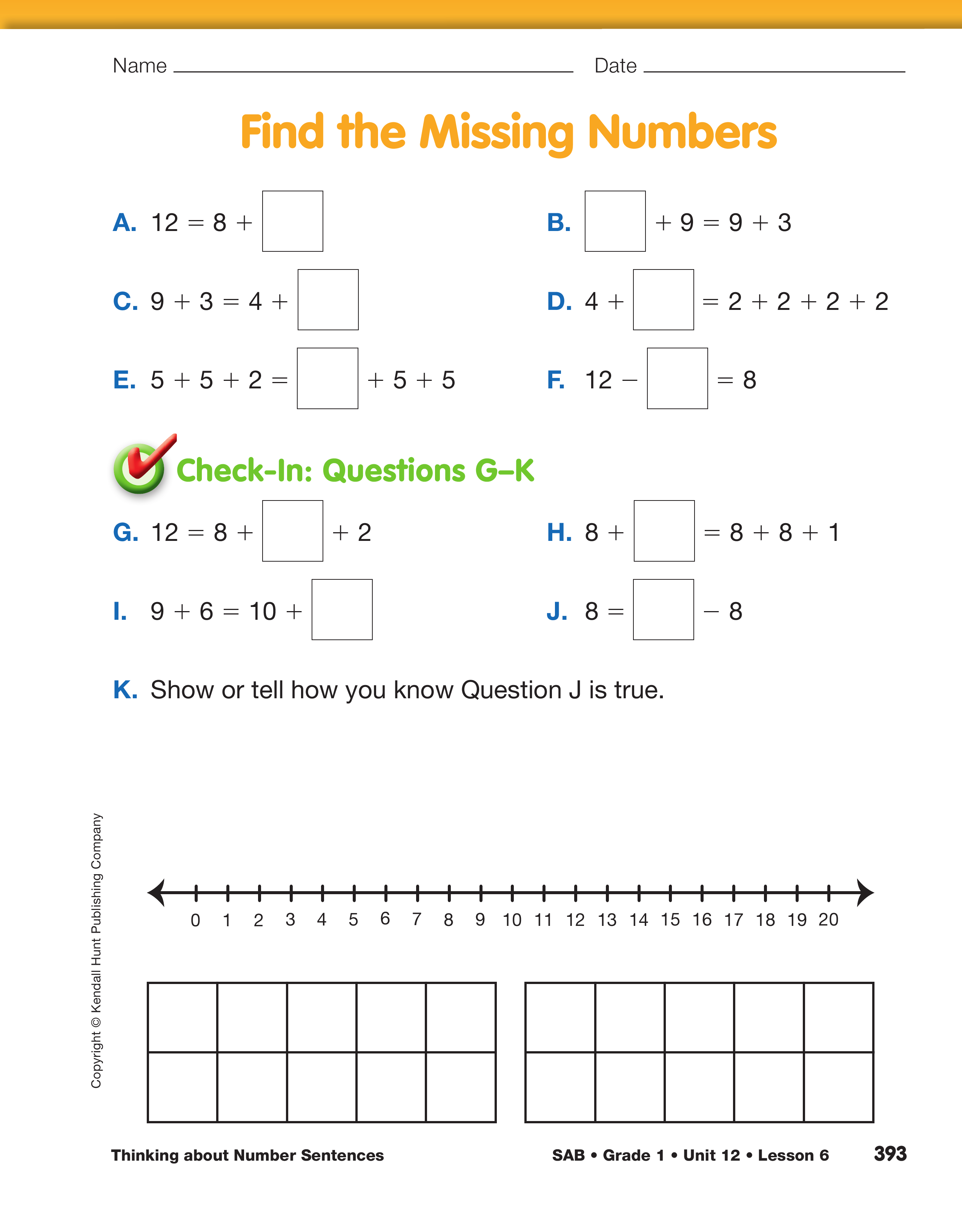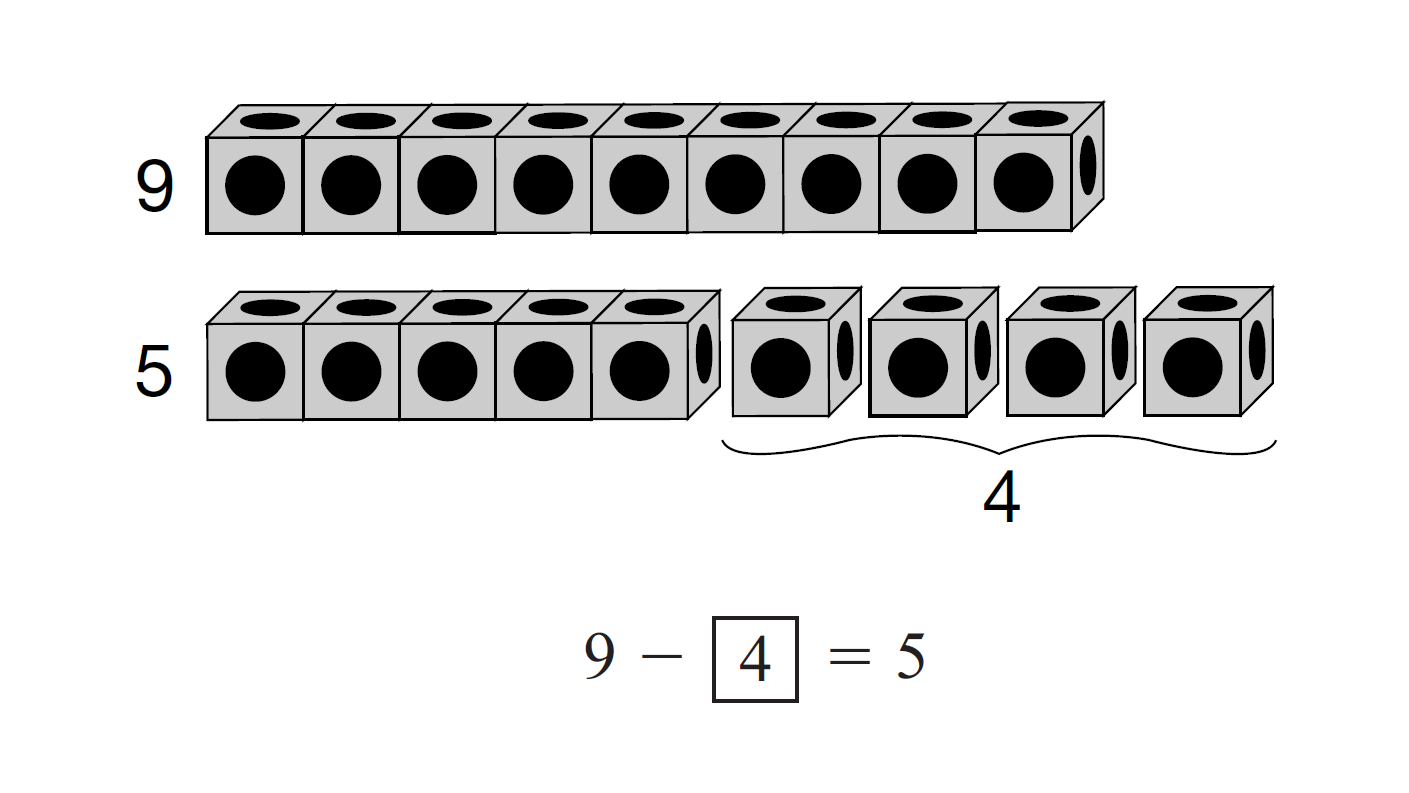Thinking about Number Sentences
Est. Class Sessions: 2Developing the Lesson
Part 2: Finding Missing Numbers
Display the following set of four number sentences:
- 4 + 5 = 5 + 4
- 4 + 4 + 1 = 8 + 1
- 4 + 4 + 1 = 1 + 4 + 4
- 5 + 4 = 9 − 0
Ask:
Next, display the following:
9 − = 5
Ask:
Display the following number sentence:
4 = 9 −
Ask:
- 8 + 3 = 9 +
- 8 + = 3 + 8
- 4 + 4 + = 11
- 11 = − 3
Ask students to work with their partners to find the missing numbers that will make each number sentence true. Remind students that the empty boxes represent one missing number. Encourage them to use tools to solve the problems. Have student volunteers share their strategies for making the number sentences true. Add any new methods to the class chart. The Sample Dialog discusses students' reasoning for finding missing numbers.
Ask students to complete the Find the Missing Numbers page in the Student Activity Book. As students work, talk with them about their thinking. Encourage them to use tools when appropriate.
As you monitor students' work, ask:
Note if students are just adding the numbers on the left side of the equal sign and putting the sum in a box or if they understand that the expressions on each side of the equal sign must, in fact, be equal.
When students have completed the page, ask volunteers to share their strategies for finding missing numbers in several questions, and discuss any questions they found particularly challenging.

















